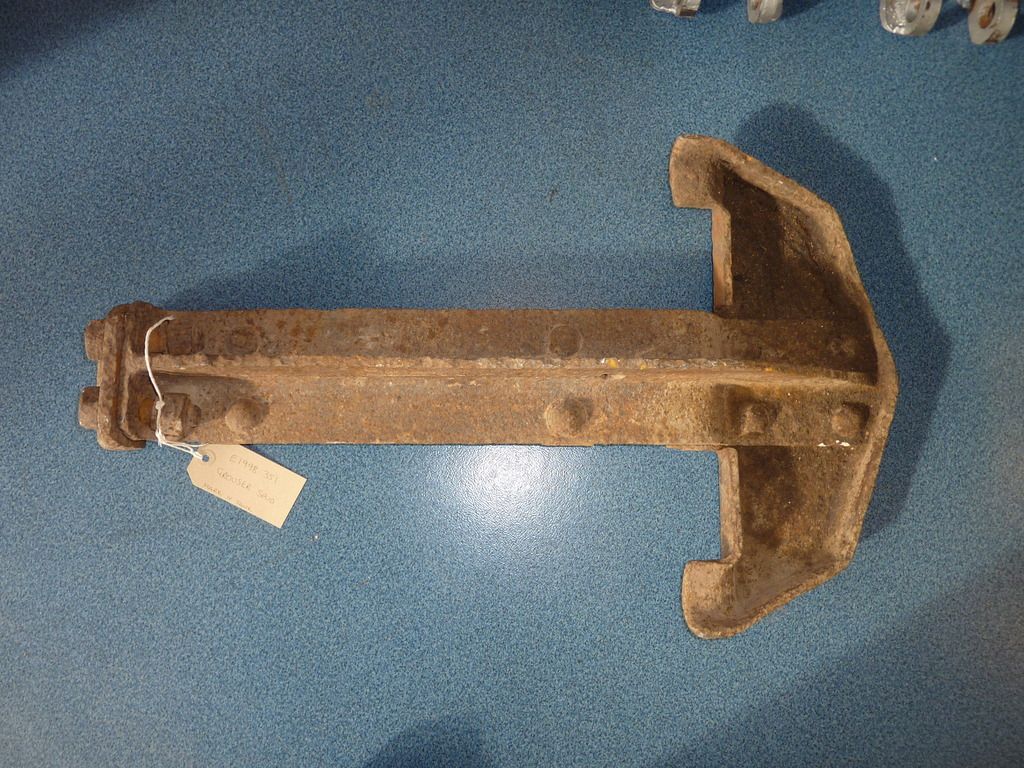Nick -
Firstly, welcome to the Mark IV forum area ! We're an enthusiastic bunch here, especially when it comes to ways to actually get the tracks on .....

Daniel (bless 'im) has pointed the finger at me to respond. I'm passionate about the history of the tanks in WW1, but I'll never claim to be an engineer, or even a good modeller. So please read my views in that light.
This subject, along with fascines, has been a focus of mine of late, so I suppose I'd better pass on my thoughts now that the subject has been raised !
'Grousers' is probably a more modern term - back in WW1 they were called 'Spuds'. Their aim, of course, was to give the tank extra traction in the mud. They started off as wooden torpedoes flapping around on chains, and were used by the Mark II's at Arras in mid-1917. They clearly didn't work but, even so, the same design was resurrected after the Armistice for the Medium B's and C's.
For the Mark IV's they came up with a new design, that bolted directly to the track plates (I've seen various references to one per 4, 6 or 8 ). There's a nice picture and description on pages 48/49 of the 'Haynes Guide' (
http://www.amazon.com/Great-War-Tank-19 ... ank+haynes) which is a book worth getting for a good overview of the Mark IV.
The problems were manifest:
[*] they were a pig to put on - there are accounts of tank crews giving up half way through and burying the unused spuds, which led to some pretty irregular layouts;
[*] they could only be put on immediately before action (ie. when the crews were more urgently engaged on fuelling, oiling, greasing, loading ammo ..... ) as they couldn't be used on paved roads;
[*] they didn't help at all in the quagmire that was 3rd Ypres, and were unnecessary in the better, firmer going at Cambrai (at least until the rain and snow came down);
[*] when stored in the 'Spud Box' (at the rear of the roof) they were estimated to add around 2 tons to the all-up weight of the tank, causing additional problems in trench-crossing, fuel consumption, ground pressure etc.
So, all-in-all, the unditching beam was a better solution, although not without its difficulties. The best solution, of course, was to only use tanks on appropriately good ground, which still holds good today. That's probably why the spuds were seldom seen after Cambrai, and never seem to have been fitted to Mark V's.
But they were a feature of the Mark IV's, so we should have a go at modelling them for completeness .....
I've yet to actually see one 'in the flesh' (I'll have to speak nicely to the Archivists at Bovington !) but, looking at original pictures, the plate sticking out of the side seems to cover about 2 track plate widths - the one it's bolted to, and half of each one either side. They also had a raised bar running along at 90 degrees to the track plate, and for most of its width, clearly to give additional traction. One can immediately see how this would flatten under the tank's weight on anything but soft going, and probably rip a tarmaced road to shreds. I can't imagine that Bovington would have been too happy about it at Armortek Day !
So, with regret, it doesn't seem possible or practical to fit spuds to our models, although I'll bow to any engineer who can cut and weld them to be strong enough. A few along the top 'for show' might be the best we could achieve. It's a shame, as they were prominent in most pictures of Cambrai tanks (I'll sort out some references and links later).
So, the best bet might be to cast them in white metal to put them in the spud box. This is something I'm minded to have a go at over the winter. If I can examine and measure a real one, and model a replica in 1/6th, I've got a friend with a casting machine who could possibly run them off.
Sorry for the monologue - frequent visitors to this part of the Armortek Empire know that that's what I do ! I'd welcome other opinions, especially from more proficient builders than me .....
Fascines, though, should be a much easier topic to tackle, and are even more iconic. But that's for another day .........

All the best,
Chris


